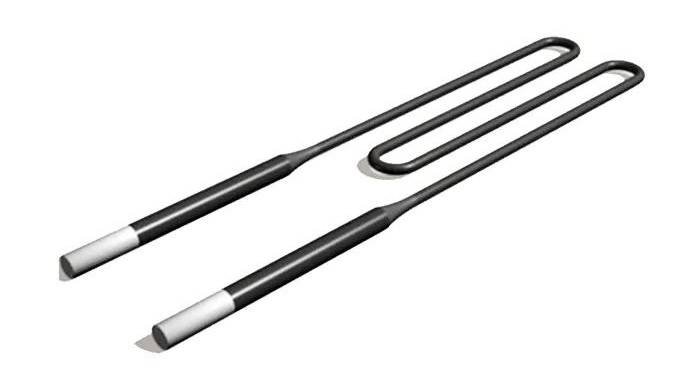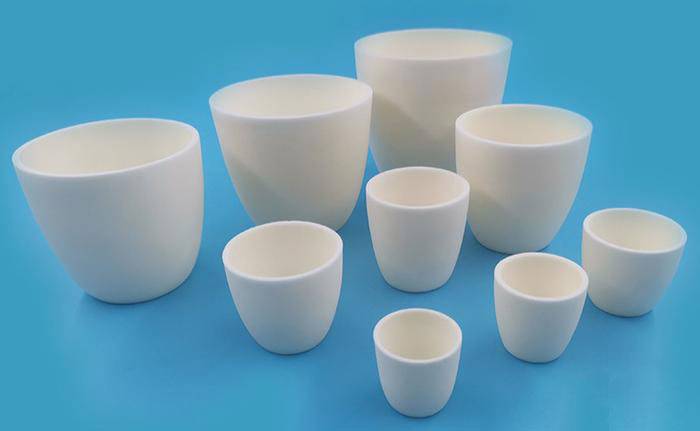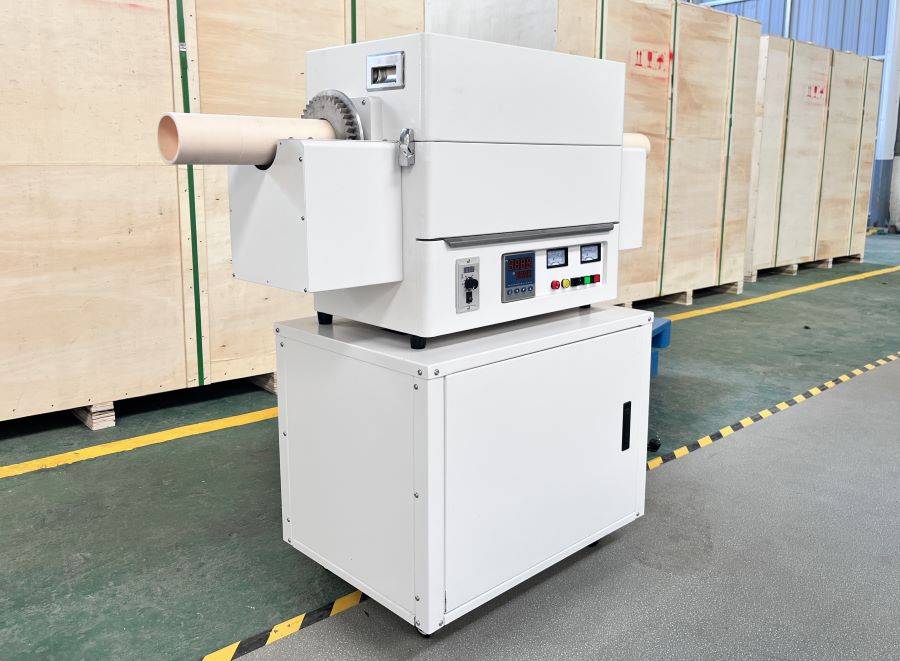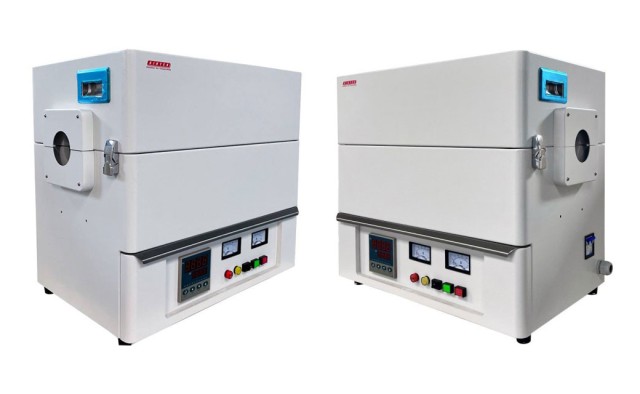Temperature Considerations
Maximum and Continuous Operating Temperatures
When selecting a tube furnace for your laboratory experiments, it is crucial to ensure that the temperature range aligns precisely with your highest temperature requirements. This involves not only identifying the maximum temperature that the furnace can achieve but also understanding its ability to maintain this temperature consistently over extended periods.
Key Temperature Metrics
- Maximum Temperature: This is the upper limit of the temperature range that the furnace can reach. It is essential to choose a furnace whose maximum temperature exceeds your experiment's peak temperature needs.
- Continuous Operating Temperature: This refers to the temperature at which the furnace can operate without interruption for an extended duration. It is vital for experiments requiring prolonged heating cycles.
Importance of Temperature Range
The temperature range of the furnace directly impacts its suitability for various applications. For instance, a furnace with a higher maximum temperature capability may be necessary for high-temperature synthesis or annealing processes. Conversely, for experiments involving lower temperature ranges, a furnace with a more modest maximum temperature but excellent temperature stability might be more appropriate.
Practical Considerations
When evaluating furnaces, consider the following practical aspects:
- Temperature Uniformity: Ensure that the furnace can maintain a uniform temperature distribution across the sample area, which is critical for consistent experimental outcomes.
- Thermal Efficiency: Look for furnaces that offer high thermal efficiency to minimize energy consumption and operational costs.
By carefully selecting a furnace based on these temperature considerations, you can ensure that your laboratory experiments are conducted under optimal conditions, leading to reliable and reproducible results.
Heating Elements
Different heating elements play a crucial role in determining the maximum operating temperature of a furnace, each with its unique characteristics and limitations. The choice of heating element is not merely a matter of preference but a critical decision influenced by the specific requirements of the experimental setup.
Key Heating Element Options
- Fe-Cr-Al Alloys: These alloys are known for their excellent resistance to oxidation at high temperatures, making them suitable for applications that demand sustained heat exposure.
- Ni-Cr-Al Alloys: Similar to Fe-Cr-Al, these alloys offer high resistance and durability, often used in environments requiring precise temperature control.
- Silicon Carbide: Renowned for its high-temperature stability and resistance to thermal shock, silicon carbide elements are ideal for furnaces operating at extreme temperatures.
- MoSi2 (Molybdenum Disilicide): This material is prized for its ability to form a protective silica layer at high temperatures, preventing further oxidation and ensuring longevity.

Material Considerations
The material of the heating element is fundamental in determining its performance. For instance, Nichrome, a common alloy containing 80% nickel and 20% chromium, is widely used due to its high resistance and the formation of a protective chromium oxide layer upon initial heating. This layer prevents further oxidation, thereby extending the element's lifespan.
Cross-Section and Diameter
The cross-section and diameter of the heating element significantly impact its resistance and, consequently, the amount of heat generated. Generally, a larger cross-section results in lower resistance, necessitating larger diameters for elements operating at higher temperatures. For example, elements in low-power applications might use small ribbons or minute-diameter wires, while high-temperature applications may require elements with diameters ranging from 1/4″ to 1/2″ (6.35 to 12.7 mm).
Applications and Challenges
In specialized furnaces like endo carburizing and vacuum furnaces, particularly low-pressure carburizing (LPC) systems, the heating elements face unique challenges. The design must carefully consider the elements' passage through insulation and steel structures to external connections, ensuring optimal performance and longevity.
By understanding these nuances, researchers can make informed decisions when selecting heating elements for their tube furnaces, ensuring both efficiency and reliability in their laboratory experiments.
Sample Size and Crucible Selection
Crucible Types
Selecting the appropriate crucible is crucial for ensuring the success of your heat treatment process, as each type is designed to withstand specific temperature ranges and chemical environments. Quartz crucibles, for instance, are ideal for applications requiring temperatures up to 1200°C. These crucibles are made from high-purity quartz, which offers excellent thermal shock resistance and minimal contamination.
On the other hand, alumina crucibles can handle temperatures up to 1800°C, making them suitable for more demanding applications. Alumina, or aluminum oxide, is known for its high melting point and excellent resistance to thermal shock and chemical corrosion. This makes it a preferred choice for high-temperature processes where durability and longevity are paramount.

| Crucible Type | Suitable Temperature Range | Key Characteristics |
|---|---|---|
| Quartz | Up to 1200°C | High thermal shock resistance, minimal contamination |
| Alumina | Up to 1800°C | High melting point, excellent resistance to thermal shock and chemical corrosion |
Beyond these two primary types, there are numerous specialized crucibles designed for specific applications. For example, inert crucibles made from materials like platinum, zirconium, and silicon carbide are used in scientific and industrial settings where extreme inertness is required to prevent any chemical reactions with the contents. These crucibles are particularly useful in processes where contamination must be strictly controlled, such as in the production of high-purity metals or advanced ceramics.
In summary, the choice of crucible should be guided by the specific temperature requirements and chemical environment of your heat treatment process. By selecting the right crucible, you can ensure optimal performance and longevity of your equipment, while also maintaining the integrity of your materials.
Furnace Tube Diameter
When choosing a furnace tube diameter, it is crucial to consider the volume of the crucible after loading the sample. This decision directly impacts the efficiency and effectiveness of the heat treatment process. The diameter of the furnace tube should be adequate to accommodate the crucible without causing any mechanical stress or compromising the uniformity of heating.
For applications requiring temperatures up to 1200°C, quartz tubes are the preferred choice. Quartz is known for its excellent thermal stability and resistance to thermal shock, making it ideal for high-temperature environments. Moreover, quartz tubes provide excellent optical transparency, which can be beneficial for monitoring the heating process through visual inspection or optical sensors.
For higher temperature applications, stainless steel tubes are more suitable. Stainless steel offers superior strength and durability at elevated temperatures, making it capable of handling heat treatment processes that exceed 1200°C. Additionally, stainless steel tubes are less prone to mechanical deformation under high-temperature conditions, ensuring the integrity of the furnace setup.
| Material | Suitable Temperature Range | Key Features |
|---|---|---|
| Quartz | Up to 1200°C | Excellent thermal stability, resistance to thermal shock, optical transparency |
| Stainless Steel | Above 1200°C | Superior strength, durability, less prone to mechanical deformation |
Selecting the right material for the furnace tube is not just about temperature resistance; it also involves considering the chemical compatibility with the sample and the crucible material. For instance, some samples may react with quartz or stainless steel, necessitating the use of alternative materials like alumina or graphite tubes.
In summary, the choice of furnace tube diameter and material should be based on a careful evaluation of the sample volume, the required temperature range, and the specific characteristics of the materials involved. This ensures that the furnace operates efficiently and safely, delivering consistent and reliable results.
Temperature Zone Considerations
Single vs. Multi-Temperature Zone Furnaces
When selecting a tube furnace for laboratory use, one of the critical decisions is whether to opt for a single-temperature zone or a multi-temperature zone furnace. This choice hinges on the specific experimental requirements and the complexity of the temperature gradients needed.
Multi-temperature zone furnaces offer several advantages over their single-zone counterparts. Firstly, they provide longer constant temperature zones, which are essential for experiments that require extended periods of uniform heating. These zones ensure that the sample remains within a narrow temperature range, typically with variations of less than ±1°C, thereby maintaining consistency throughout the process.
Moreover, multi-temperature zone furnaces are equipped to handle more complex temperature gradients. This capability is particularly beneficial for experiments that involve varying temperature conditions along the length of the furnace tube. For instance, certain materials may require different heat treatment at various stages, and a multi-zone furnace can accommodate these diverse needs by independently controlling each zone's temperature.

In contrast, single-temperature zone furnaces are simpler and often more cost-effective, making them suitable for experiments that do not require the sophisticated temperature management offered by multi-zone models. However, they are limited in their ability to provide uniform heating over extended distances or to manage intricate temperature profiles.
Therefore, the choice between single and multi-temperature zone furnaces should be guided by the specific demands of the experiment, with multi-zone models being the preferred option for those requiring precise and complex temperature control.
Role of Constant Temperature Zones
Constant temperature zones play a pivotal role in maintaining the integrity and consistency of experimental results within a tube furnace. These zones are meticulously designed to provide uniform heating across the entire sample, ensuring that temperature variations are minimal. Typically, the temperature differences within these zones are kept to less than ±1°C, which is crucial for experiments requiring precise thermal control.
For instance, in materials science, where the properties of materials can be significantly altered by even minor temperature fluctuations, the uniformity provided by constant temperature zones is indispensable. This precision is achieved through advanced heating elements and sophisticated temperature control systems that monitor and adjust the temperature in real-time.
Moreover, in applications such as crystal growth or chemical vapor deposition, where the process is highly sensitive to temperature gradients, the use of multi-temperature zone furnaces becomes essential. These furnaces offer extended constant temperature zones, allowing for more complex temperature profiles that can simulate various experimental conditions. This capability not only enhances the versatility of the furnace but also broadens the range of experiments that can be conducted with high accuracy and reproducibility.
Furnace Functions
Basic and Advanced Systems
When selecting a tube furnace for your laboratory, you have the option to choose between basic and advanced systems, each tailored to specific experimental needs. Basic tube furnaces offer reliable performance for general heating and annealing processes, making them a cost-effective choice for many applications. However, for more specialized treatments, advanced systems provide enhanced capabilities that can significantly impact experimental outcomes.
For instance, Plasma-Enhanced Chemical Vapor Deposition (PECVD) systems are designed for the growth of graphene, a material known for its exceptional electrical and thermal properties. These systems employ plasma to enhance the deposition process, allowing for precise control over the material's properties.
Vertical tube furnaces are another advanced option, particularly suited for quenching processes. These furnaces offer efficient heat transfer and rapid cooling rates, which are crucial for achieving the desired microstructural changes in materials like steel.
High-pressure and vacuum furnaces provide additional versatility, enabling specialized treatments that require controlled atmospheres. These systems can handle extreme conditions, making them ideal for experiments involving high-pressure synthesis, vacuum annealing, or the study of materials under low-oxygen environments.
| System Type | Application | Key Features |
|---|---|---|
| Basic Tube Furnaces | General heating, annealing | Cost-effective, reliable performance |
| PECVD Systems | Graphene growth | Plasma-enhanced deposition, precise property control |
| Vertical Tube Furnaces | Quenching | Efficient heat transfer, rapid cooling rates |
| High-Pressure/Vacuum Furnaces | Specialized treatments (high-pressure synthesis, vacuum annealing) | Controlled atmospheres, extreme condition handling |
By understanding the unique capabilities of these systems, you can make an informed decision that aligns with your experimental requirements and research goals.

Special Capabilities
When selecting a tube furnace for laboratory use, it's essential to consider models equipped with specialized features that cater to unique experimental needs. One such feature is the rotary tube furnace, which ensures uniform heat treatment by continuously rotating the sample within the furnace. This rotation helps in achieving a homogeneous temperature distribution, which is crucial for experiments requiring precise thermal control.
Another specialized capability to look for is furnaces designed for hydrogen treatment. These models are engineered to handle environments rich in hydrogen, making them ideal for applications in materials science where hydrogenation processes are critical. Additionally, there are furnaces specifically designed for high-temperature corrosion studies. These units are built to withstand and simulate extreme conditions that cause material degradation, providing valuable insights into the durability and performance of various materials under severe thermal and chemical stresses.
By opting for a furnace with these special capabilities, researchers can ensure that their experimental setups are not only robust but also tailored to meet the specific demands of their projects. This level of customization enhances the accuracy and reliability of the results, ultimately contributing to more meaningful and impactful scientific discoveries.
Vacuum Pump Selection
Low Vacuum Systems
When selecting a vacuum pump for low vacuum systems, it is crucial to ensure that the chosen pump is fully compatible with the furnace's operational requirements. The compatibility extends beyond mere pressure levels; it includes considerations of flow rate, pumping speed, and the ability to handle the specific gases or vapors that the furnace might produce during operation.
For instance, a rotary vane pump is often preferred for low vacuum applications due to its ability to maintain a steady vacuum level while operating continuously. These pumps are known for their reliability and low maintenance, making them ideal for laboratory settings where downtime is costly.
Additionally, the choice of vacuum pump should align with the furnace's overall design and the materials being processed. For example, if the furnace is used for experiments involving volatile organic compounds, a pump with a built-in gas ballast may be necessary to prevent condensation and subsequent damage to the pump mechanism.
In summary, the selection of a vacuum pump for low vacuum systems is a nuanced process that requires careful consideration of both the furnace's operational parameters and the specific demands of the experiments being conducted. By ensuring compatibility and functionality, laboratories can optimize their vacuum systems for efficiency and longevity.
Related Products
- Multi Zone Laboratory Quartz Tube Furnace Tubular Furnace
- Vertical Laboratory Quartz Tube Furnace Tubular Furnace
- 1700℃ Laboratory Quartz Tube Furnace with Alumina Tube Tubular Furnace
- 1400℃ Laboratory Quartz Tube Furnace with Alumina Tube Tubular Furnace
- Laboratory Vacuum Tilt Rotary Tube Furnace Rotating Tube Furnace
Related Articles
- Introducing the Lab Vacuum Tube Furnaces
- Comprehensive Guide to Tube Furnaces: Types, Applications, and Considerations
- Advanced Laboratory Furnaces: Box, Muffle, and Tube Options for High-Temperature Applications
- Installation of Tube Furnace Fitting Tee
- Exploring the Using a Chamber Furnace for Industrial and Laboratory Applications





















